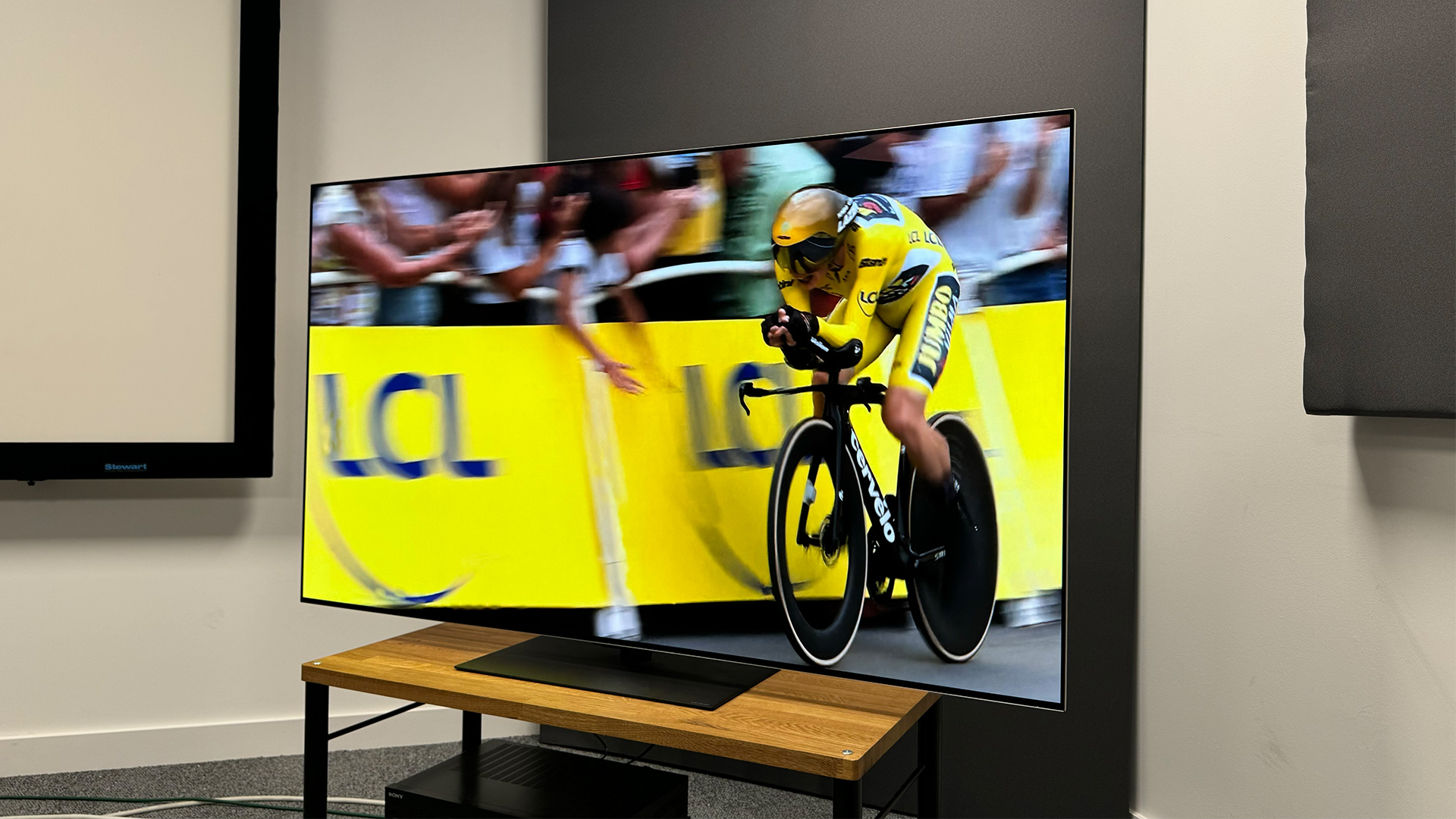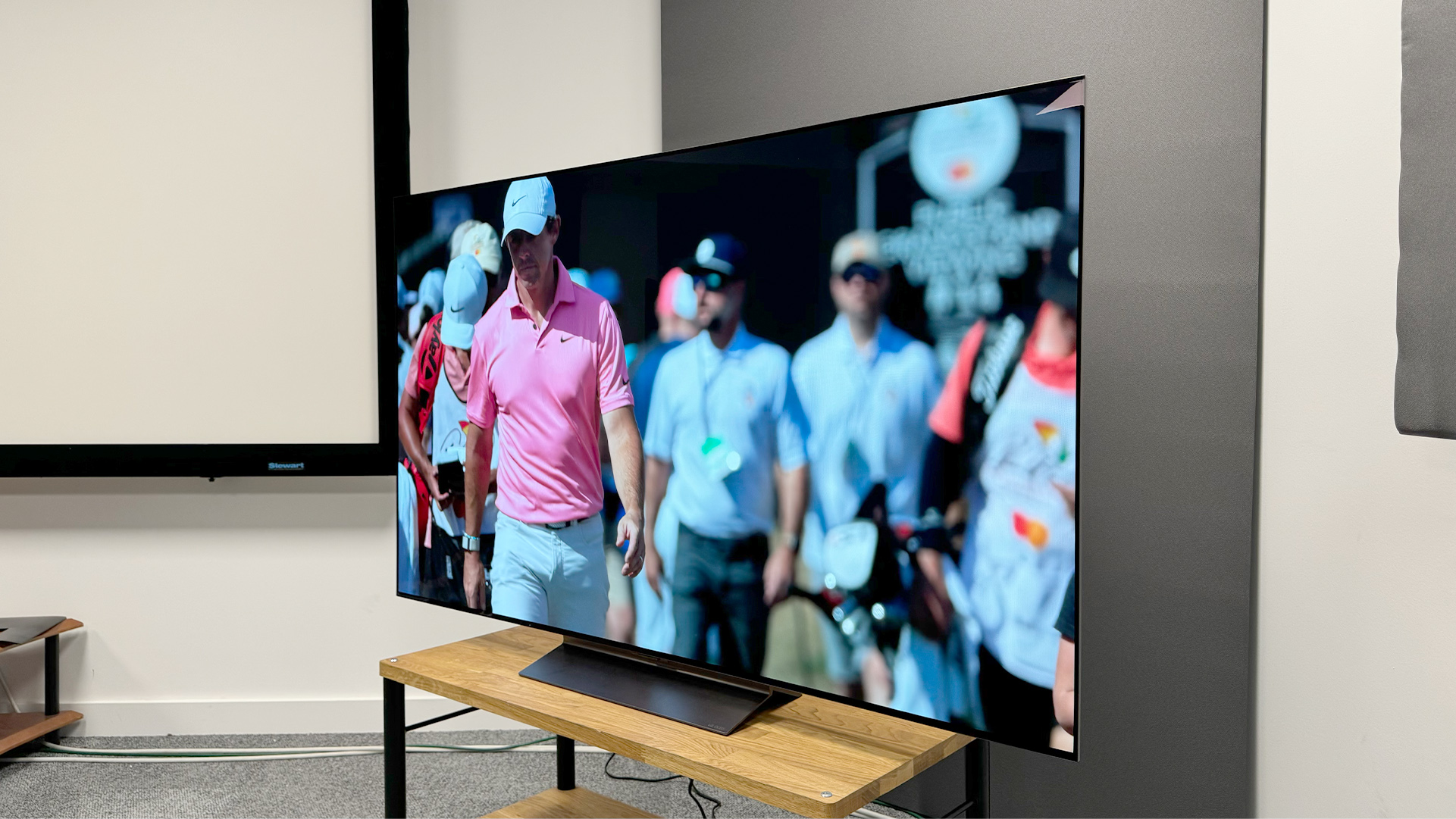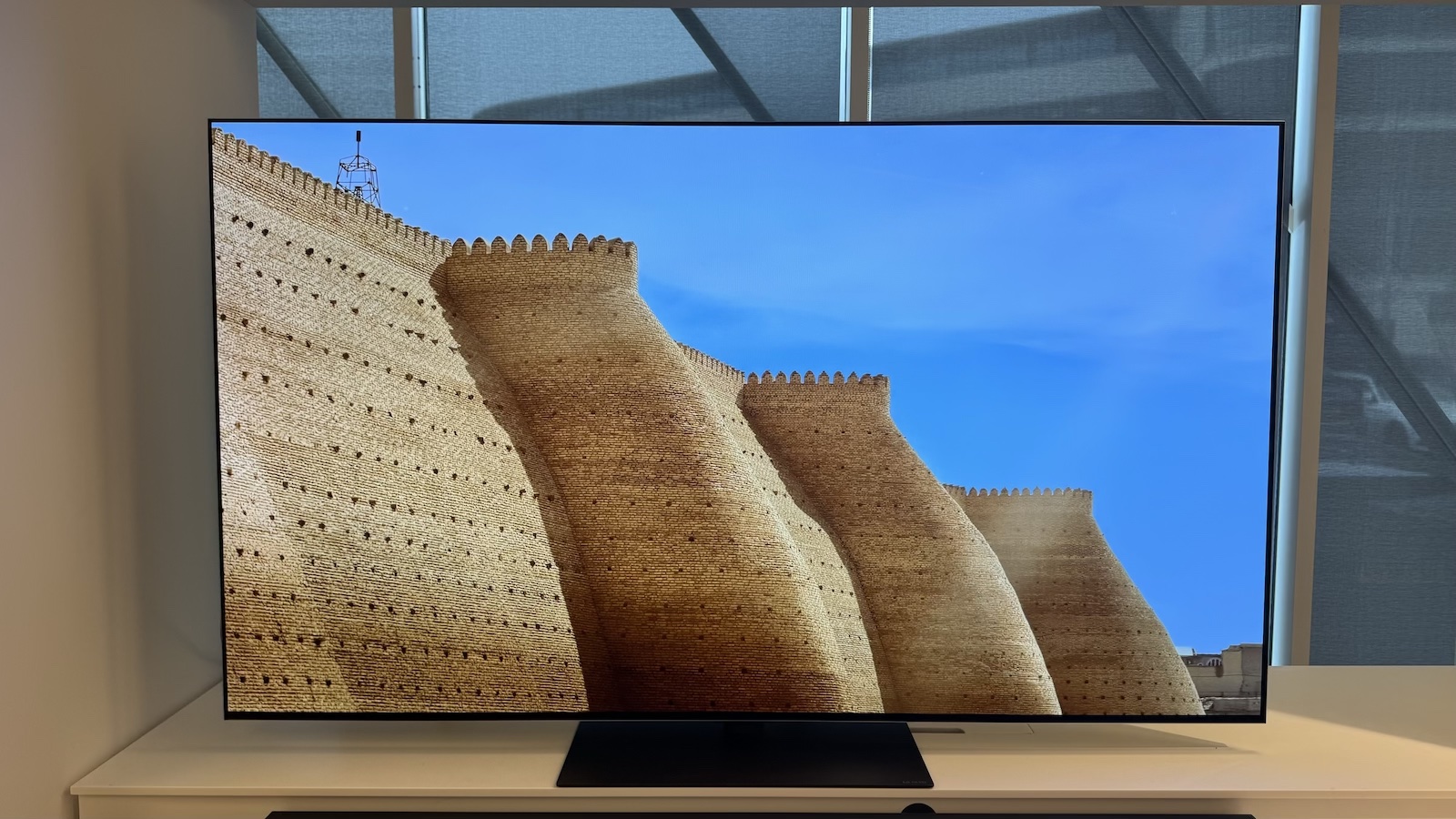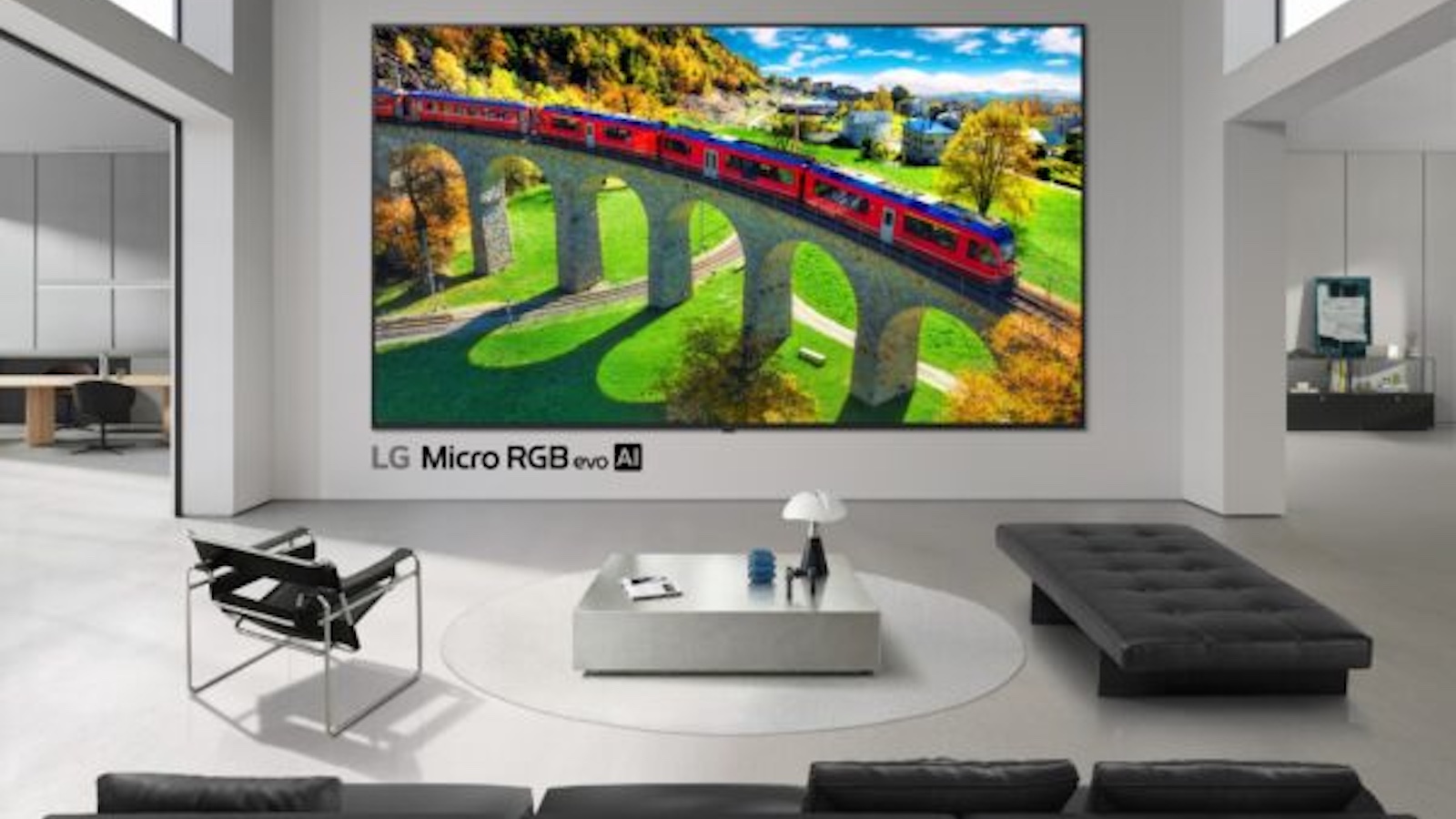LG C4 vs G4: which 2024 OLED TV should you buy?
How do LG's two most high-profile OLED TVs for 2024 differ?

Screen size: 65in (also available in 42in, 48in, 55in, 77in, 83in)
HDMI inputs: x4 (4 x 48Gbps HDMI 2.1)
Gaming features: 4K/120Hz, 4K/144Hz, VRR, ALLM, Dolby Vision game mode, HGiG
Dimensions (hwd, without stand): 83 x 144 x 4.5cm
This is a big improvement on the C3. It's brighter and sharper, with richer tones and more vibrant colours. It can't compete with the stunning brightness of the G4, but then it is a fair bit cheaper. We expect that price to tumble soon, too.
Pros
- Punchy, sharp, rich and vibrant, yet still natural
- Much improved sound quality
- Excellent UI and flawless gaming specs
Cons
- Minor lack of shadow detail in SDR
- MLA tech would have been nice

Screen size: 65in (also available in 55in, 77in, 83in and 97in)
HDMI inputs: x4 (4 x 48Gbps HDMI 2.1)
Gaming features: 4K/120Hz, 4K/144Hz, VRR, ALLM, Dolby Vision game mode, HGiG
Dimensions (hwd, without stand): 145 x 84 x 5.7cm
Once again, the MLA-boosted screen of LG's G-Series model has brightness to spare, and easily competes with the best premium TVs from rival brands. It's notably more vibrant in darker scenes, and while the audio still leaves a lot to be desired, that's easily fixed with a soundbar.
Pros
- Brilliantly bright picture that’s full of contrast
- Stellar gaming features
- Accurate motion handling
Cons
- Thin audio that’s prone to sibilance
LG's new OLED TVs are always one of the highlights of the AV calendar, and this year is no different. It unveiled its new models at the start of the year, and the stars of the show were the C4 and G4.
The C4 is the step-down model, and the latest entry into LG's once all-conquering C-series. On paper, it doesn't look like much of an improvement over the C3, but now we've tested it, we can confirm it is much better. In fact, we'd go as far as to say it puts LG back in the top spot in the mid-range OLED market.
The G4 is a step up from the C4. It's significantly brighter, thanks to its combination of heatsink and MLA tech, and it has a better processor, too. But of course, it's more expensive.
How do the two TVs compare? And which would be better for you? Let's find out.
LG C4 vs G4: price

LG's TVs tend to be cheaper than Sony and Samsung's equivalent models, but better yet, they're often heavily discounted in the sales. Hence these launch prices could be discounted as early as this summer.
| Size | C4 | G4 | G4S |
|---|---|---|---|
| 42" | £1400 / $1500 / AU$2199 | N/A | N/A |
| 48" | £1500 / $1600 / AU$2499 | N/A | N/A |
| 55" | £1900 / $2000 / AU$3299 | £2500 / $2600 / AU$4199 | £2500 / N/A / N/A |
| 65" | £2700 / $2700 / AU$4299 | £3300 / $3400 / AU$5299 | £3300 / N/A / N/A |
| 77" | £3800 / $3700 / AU$5999 | £4500 / $4600 / AU$7999 | N/A |
| 83" | £6000 / $5400 / AU$7999 | £7000 / $6500 / AU$10,000 | N/A |
| 97" | N/A | £TBC / $25,000 / AU$TBC | N/A |
The good news is both models are actually cheaper than their predecessors. The G4 is £100-£200 cheaper than the G3, but at its bigger sizes the saving is as high as £500. The same is true of the C4.
These are only launch prices, of course, and given the discounts applied over their lifespans, the outgoing models will be cheaper right now. The 48-inch C3 is currently £859 at Amazon – over £500 cheaper than the equivalent C4. Look out for some great deals at the upcoming Amazon Prime Day.
The latest hi-fi, home cinema and tech news, reviews, buying advice and deals, direct to your inbox.
There's also a variant of the G4 with a stand, called the G4S. This costs the same as the wall-mounted G4, but only comes in 55- and 65-inch sizes.
** Winner: LG C4 **
LG C4 vs G4: design

The spec gap between the G4 and C4 has gotten bigger than ever this year, but the two TVs are actually closer in terms of design.
For the first time, the smaller models of G4 (55 and 65 inches) will come with a stand. The larger sizes (77, 83 and 97 inches) have the Zero Gap Wall Mount for hanging it flush against your wall. Previously, all sizes of G3 only shipped with the wall bracket.
Most sizes of C4 (48, 55, 65, 77 and 83 inches) come with a stand, except for the 42-inch model, which has feet.
Both TVs look very similar to the models they replace. The G4 has the same picture frame-like design, and same 'step' around the edge of the back, while the C4 is just as slim as the C3 before it (though thicker than the G4, at 4.7cm at its thickest to 2.4cm for the G4).
** Winner: LG G4 **
LG C4 vs G4: features

Naturally, being a pricier model, the G4 offers some extra features over the C4. Like the G3, it has next-gen Micro Lens Array (MLA) panel technology and a heatsink, both of which help increase picture brightness (for the first time, MLA comes to the 83-inch model this year too). This is also facilitated by the new Alpha 11 processor that unleashes a new Peak Highlighter feature. LG says this will reach a peak brightness level 150 per cent higher than a 'traditional' OLED (such as the B4) but only within a small 3 per cent window. Expect punchy, bright highlights then.
The Alpha 11 brings other improvements too – a 70 per cent increase in graphics power and a 30 per cent boost to general processing. Two new features also come as part of LG's AI Picture Pro: AI Director Processing (which adapts the picture to best match the director's intended colour tone) and Object Enhancing by Visual Perception (which analyses and enhances each pixel).
Better audio is another promise of the Alpha 11. AI Sound Pro will now process virtual 11.1.2 surround upmixing (up from 9.1.2 on the G3), while a voice remastering feature improves dialogue clarity.
New gaming features? Why of course. The refresh rate has been upped from 120Hz to 144Hz for PC gamers, while full Nvidia G-Sync certification makes its debut. The C4 gets these too, to complement its already excellent suite of gaming features: four HDMI 2.1 ports, LG's Game Optimiser menu, ALLM and VRR.
Dolby Vision gaming is supported up to the new 144Hz limit, too, futureproofing both TVs for when a games machine can output Dolby Vision at that refresh rate (the Xbox Series consoles are the only compatible games consoles, but they're capped at 4K/120Hz).
This year marks the first time LG's C- and G- series models have different processors. The C4 misses out on the Alpha 11, instead getting an upgraded version of the Alpha 9 found in last year's C3. This allows for the same audio upmixing and voice mastering as the G4, but not the Peak Highlighter feature. It also lacks the heatsink and MLA technology of the G4. Still, LG claims the C4 will still be brighter than its C3 predecessor – having reviewed both, this is something we can attest to.
Both the G4 and C4 run the same webOS 24 operating system, which comes with at least five years of free updates, recommendations on the home screen, password-protected user accounts and more. You can read the full feature list here.
** Winner: LG G4 **
LG C4 vs G4: picture

MLA adds a real touch of brilliance to the G4's picture quality. Combined with the heatsink, it really brings out bright highlights, especially when contrasted against a dark background. It makes for a beautifully three-dimensional presentation.
Low light scenes are noticeably more vibrant than on the rather lacklustre G3 – something we're glad to see LG has fixed. Colour reproduction is nothing short of stellar, especially when it comes to skin tones. The colour hue could be a little wider compared to some of its price rivals, but you'll only notice with very bright HDR content.
Overall, it's noticeably brighter, more vibrant and crisper than the C4. But the C4 is still an impressive TV, with natural-looking skin tones. It has plenty of pop too, even in a brightly-lit room, and bags of detail in even the brightest parts of the scene. Watching a 4K Blu-ray, we're struck by how much sharper, more solid and more impactful the image is than the comparatively soft C3. It even puts the Award-winning A80L in the shade in terms of warmth and richness of tone.
Colours are vibrant, but never look artificial, and they're consistently delivered from the brightest to the darkest parts of the picture. Motion is buttery smooth, too.
We do have one criticism: with HD SDR content, the C4 doesn't reveal quite as much dark detail as the A80L. But that very minor flaw aside, the C4 is a stellar performer, and puts LG back ahead of the mid-range pack.
** Winner: LG G4 **
LG C4 vs G4: sound

From the sublime to the ridiculous, LG's TVs usually look fantastic, but their sound performance has been sorely lacking of late. We're happy to report that the C4 is a big improvement in this area.
The C3 sounded just plain dull, but the C4 is pretty punchy and dynamic. True, heavy bass tends to overwhelm it, but less so than many rivals. The AI Sound mode has had its rough edges smoothed off – last year it was so harsh to be borderline unlistenable, but now it's a lot less distracting. It has more weight than the Sony A80L, and is richer tonally, but the Sony wins for directness and clarity. The fact the C4 can even compete shows LG has made big strides in the audio department.
Out of the box, the G4 sounds flat and thin, but the AI Sound Pro feature makes dialogue more directional and clear, and bass more precise. But it still lacks the dynamism and heft you would expect when you're paying this much for a TV. And higher up the frequency range, sibilance creeps in. Our longstanding advice holds true: add a soundbar.
** Winner: LG G4 **
LG C4 vs G4: verdict
Both of these LG OLED TVs are ones to watch this year. The C4 and G4 offer plenty of new features over their respective predecessors and look to build upon an excellent legacy. Both are already shaping up to be some of the best TVs of 2024.
The gap between the two models has never been wider, with the G4 offering a better processor to go alongside its extra MLA tech and heatsink. It's clearly the better TV, but being about £500 more expensive than the C4 at the most popular sizes, it is much less accessible. Decisions, decisions...
MORE:
Read our full LG G4 and LG C4 reviews
Our rundown of the best LG TVs you can buy
LG 2024 OLED TV range: everything you need to know about this year's lineup
Joe has been writing about tech for 20 years, first on staff at T3 magazine, then in a freelance capacity for Stuff, The Sunday Times Travel Magazine (now defunct), Men's Health, GQ, The Mirror, Trusted Reviews, TechRadar and many more. His specialities include all things mobile, headphones and speakers that he can't justifying spending money on.

